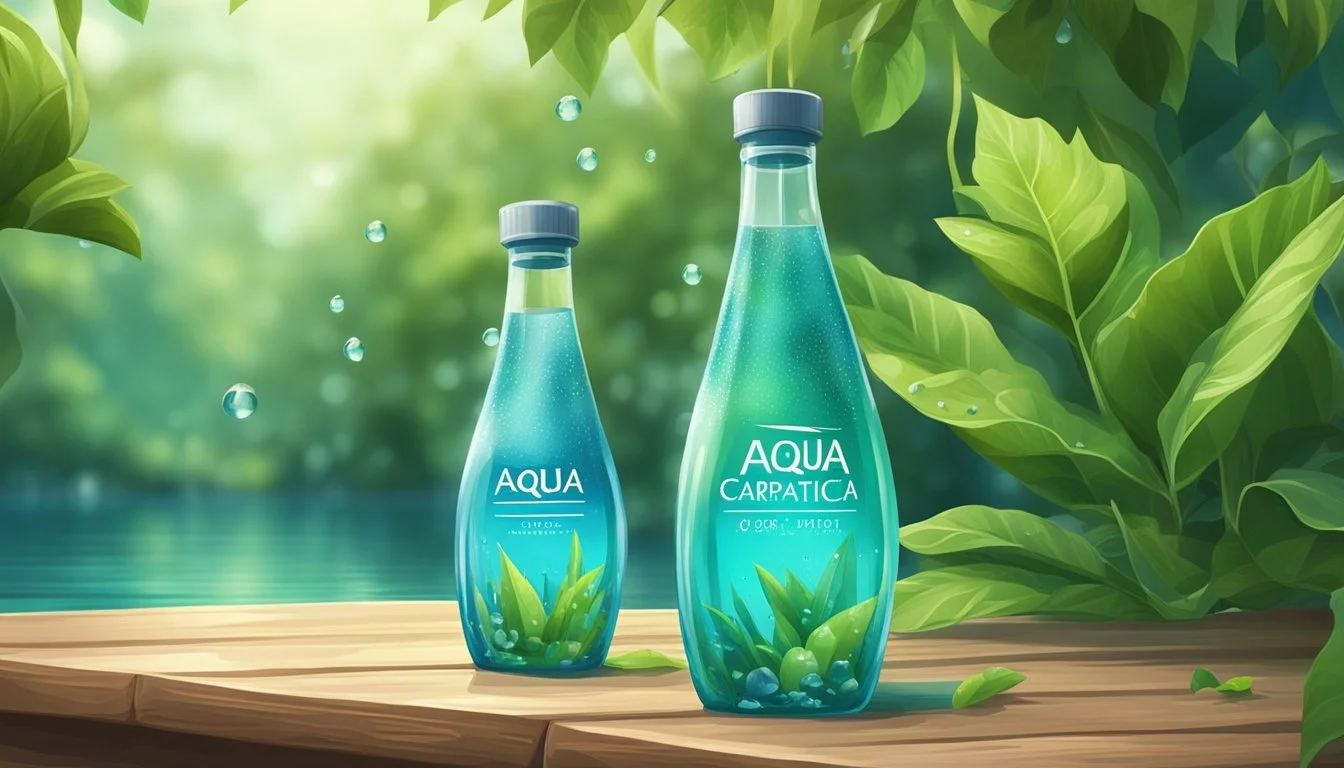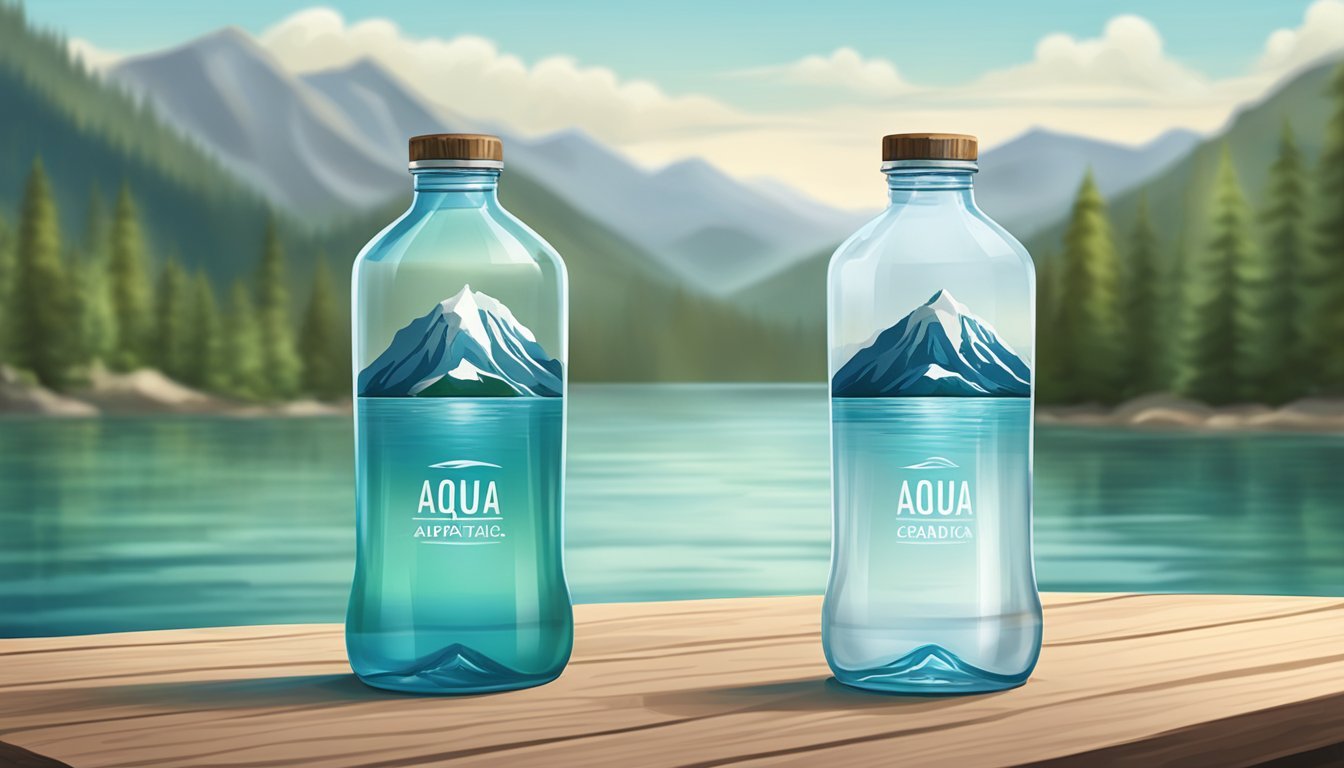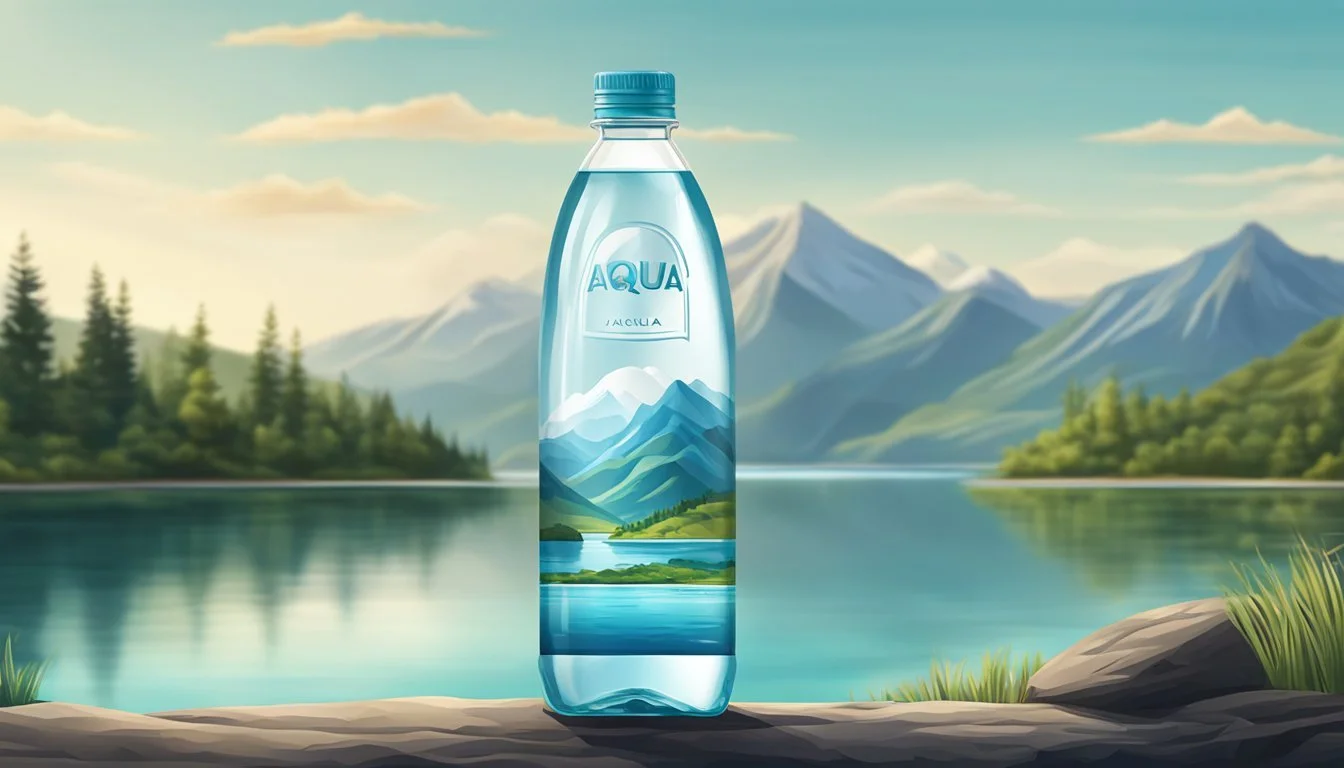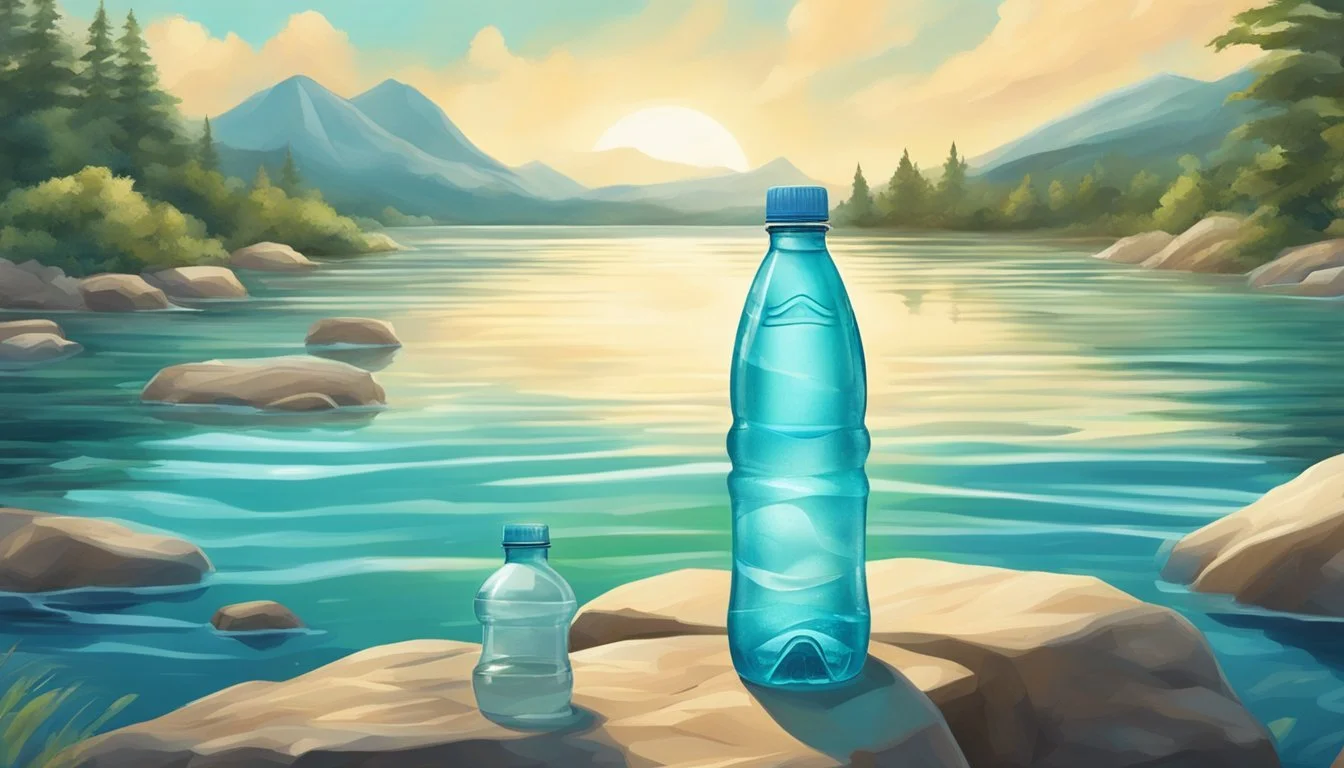Aqua Carpatica vs. Open Water
The Ultimate Bottled Water Comparison
Choosing the right bottled water can make a big difference in terms of both taste and health benefits. Aqua Carpatica and Open Water stand out in the market for their unique features and quality. Aqua Carpatica is renowned for being naturally nitrate-free and having low sodium levels, which appeals to health-conscious consumers. Open Water, on the other hand, emphasizes sustainability, as it is packaged in aluminum bottles that are 100% recyclable, offering an eco-friendly alternative.
If you're looking for a pure and clean tasting water with health benefits, Aqua Carpatica's naturally nitrate-free composition might be the best choice. However, if environmental impact is a significant factor in your decision, Open Water's commitment to sustainability makes it an attractive option. Both brands have carved out their niches by focusing on what matters most to their consumers—health benefits for Aqua Carpatica and eco-friendliness for Open Water.
While both offer high-quality hydration, the choice ultimately depends on your priorities. Aqua Carpatica provides a mineral-rich, low-sodium water option, beneficial for those mindful of their dietary intake. Conversely, Open Water's approach aligns with a growing need for sustainable living without compromising on the purity and taste of the water itself.
Background of Brands
Aqua Carpatica boasts a distinct heritage linked to the pristine environment of the Carpathian Mountains, while Open Water champions sustainability with its innovative packaging solutions.
History of Aqua Carpatica
Aqua Carpatica originates from the Carpathian Mountains, a region celebrated for its natural beauty and unpolluted environment. The brand prides itself on providing naturally nitrate-free mineral water, which is also low in sodium.
This bottled water company was founded with the intention of offering consumers a pure and healthy hydration option. The water is sourced from protected springs, ensuring it remains untouched by pollutants. Aqua Carpatica positions itself as a premium brand, leveraging the pristine origins of its product.
Open Water's Mission
Open Water was created with a strong commitment to sustainability. Unlike many bottled water companies, Open Water uses 100% recyclable aluminum bottles and cans.
Their mission extends beyond just packaging; they aim to reduce plastic waste drastically. This eco-friendly approach resonates with environmentally conscious consumers looking for sustainable alternatives.
Open Water’s focus on reducing carbon footprint and promoting recycling sets it apart in the crowded bottled water market. Their efforts are geared towards making a meaningful impact on the environment while providing quality water to consumers.
Water Source and Natural Composition
Understanding the origins and composition of bottled water is crucial. Aqua Carpatica and Open Water differ significantly in their sources and natural elements.
Carpathian Springs and Aqua Carpatica
Aqua Carpatica originates from the pristine Carpathian Mountains in Romania. It is sourced from natural springs, specifically the Paltinis Spring, which is notable for its long underground journey.
This journey takes around 40 years, allowing natural filtration and enrichment with minerals and CO2. The water undergoes minimal processing to preserve its purity and mineral content. Its nitrate-free composition sets it apart, making it an excellent choice for health-conscious consumers.
Sourcing of Open Water
Open Water utilizes a different approach, focusing on sustainability. Sourced from various natural springs across the United States, it emphasizes eco-friendly practices.
The water is processed to ensure purity while maintaining essential minerals. Open Water's commitment to reducing carbon footprint includes using recyclable aluminum bottles. This makes it an appealing option for environmentally conscious individuals.
Health and Hydration
Aqua Carpatica and Open Water both offer distinct benefits related to health and hydration. Differences in mineral content and pH balance stand out when comparing these two brands.
Mineral Content and Health Benefits
Aqua Carpatica boasts natural mineral content, including significant levels of calcium, magnesium, and bicarbonate. These minerals support bone health, muscle function, and overall wellness. For example, magnesium is essential for muscle relaxation and energy production.
Open Water, while also providing hydration, may not have the same mineral richness. Calcium and magnesium are often highlighted in sports nutrition, making Aqua Carpatica a choice for those seeking added health benefits. The bicarbonate in Aqua Carpatica helps neutralize stomach acid, aiding in digestion.
Minerals Comparison:
Mineral Aqua Carpatica Open Water Calcium Yes Variable Magnesium Yes Variable Bicarbonate Yes Not specified
Hydration and pH Balance
Hydration effectiveness varies between Aqua Carpatica and Open Water due to their differing pH levels. Aqua Carpatica is naturally alkaline with a pH around 7.8, promoting a balanced internal environment. This can benefit individuals by reducing the acidity in the body.
Open Water, typically with a neutral pH of around 7, offers solid hydration but lacks the alkalinity that some seek for balancing body pH. A balanced pH is crucial for maintaining metabolic functions and enzyme activities. Aqua Carpatica's higher pH may be especially beneficial for those monitoring their acid-base balance.
pH Levels Comparison:
Brand pH Level Aqua Carpatica ~7.8 (alkaline) Open Water ~7.0 (neutral)
Purity and Filtration Process
In comparing Aqua Carpatica and Open Water, understanding their purity and filtration processes is crucial. This includes examining natural features, purification methods, and specific content like minerals and contaminants.
Aqua Carpatica's Natural Purity
Aqua Carpatica water is naturally sourced from the Carpathian Mountains, known for their pristine environment. The water travels through volcanic rocks and limestone, which naturally filter it and add minerals.
One standout feature of Aqua Carpatica is its nitrate-free composition. High nitrate levels can be harmful, especially for infants. Aqua Carpatica also boasts low sodium levels, making it a healthier choice for those managing sodium intake.
The natural filtration process ensures no chemicals or artificial processes are involved, preserving the water's purity. Furthermore, the water is tested regularly to ensure it remains free from contaminants like lead and other harmful substances.
Filtration Techniques of Open Water
Open Water uses a thorough filtration system to ensure high purity levels. The process typically involves several stages, including carbon filtration and reverse osmosis, which removes impurities and contaminants.
Carbon filtration helps eliminate chlorine, chemicals, and organic compounds that can affect water taste and safety. Reverse osmosis is effective in removing dissolved salts, lead, nitrates, and other contaminants, ensuring the water is pure.
Open Water is also packaged in environmentally friendly aluminum bottles, distinguishing it from many other brands that use plastic. This not only contributes to purity but also to sustainability, appealing to environmentally conscious consumers.
Taste and Aftertaste
When comparing Aqua Carpatica and Open Water, it's essential to examine the specific aspects of taste and aftertaste. Each brand offers unique characteristics, making them stand out in different aspects.
The Flavor Profile of Aqua Carpatica
Aqua Carpatica's flavor profile emphasizes its natural purity. This bottled water is renowned for being nitrate-free, providing a crisp and clean taste. The low mineral content gives it a neutral flavor, making it suitable for a wide range of palates.
Water sommeliers often praise its light and refreshing quality. It leaves a very subtle, almost non-existent aftertaste, which enhances its appeal, especially among those who prefer a neutral drinking experience.
Moreover, Aqua Carpatica's sparkling variant offers a gentle effervescence, adding a delicate sparkle without overwhelming the palate. The bubbles are fine and consistent, providing a sophisticated drinking experience.
Open Water’s Freshness Factor
Open Water aims to capture the essence of fresh, natural water. It is sourced from highly protected aquifers, ensuring a clean and pure taste. The immediate impression is one of pristine freshness, attributed to its minimal processing.
This brand is often described as having a pure, straightforward taste. The low sodium content enhances its clean flavor, making it a favorite in blind taste tests.
An essential aspect of Open Water’s flavor profile is its lack of noticeable aftertaste. This quality makes it highly appealing to those who prefer an uncomplicated, refreshing drink that quenches thirst without lingering.
Packaging and Environmental Impact
The packaging choices of Aqua Carpatica and Open Water highlight their respective environmental commitments. Both brands focus on reducing their ecological footprints through recyclable and sustainable materials.
Aqua Carpatica's Commitment to Sustainability
Aqua Carpatica uses 100% recyclable PET plastic bottles for its water, aiming to reduce waste. These bottles are designed to be lightweight, which minimizes the carbon footprint during transportation.
Glass bottles are also part of their portfolio, and although glass is heavier and thus more costly to transport, it’s highly recyclable and doesn’t degrade in quality over multiple recycling processes.
For Aqua Carpatica, packaging isn’t just about aesthetics; it's about sustainability and the environmental impact from production to disposal. They emphasize the potential for these materials to be recycled repeatedly, achieving a closed-loop system to minimize waste.
Eco-Friendly Philosophy of Open Water
Open Water takes a different approach by opting for aluminum cans instead of traditional plastic bottles. Aluminum is infinitely recyclable and has a robust recycling infrastructure worldwide, making it a highly sustainable material choice.
Plastic packaging is avoided entirely, focusing on reducing single-use plastic waste. Their aluminum cans are also lightweight, making the transportation more energy-efficient, which translates to a lower carbon footprint.
Open Water emphasizes its environmental philosophy, promoting not just recyclable packaging but also a broader shift towards renewable resources and reduced waste. This commitment aims to lead the charge in moving away from plastic and towards a more sustainable future through innovative packaging solutions.
Consumer Accessibility
Aqua Carpatica and Open Water offer different avenues for consumer accessibility through retail availability and e-commerce options. This affects how easily customers can purchase these products based on their shopping preferences.
Retail Availability
Aqua Carpatica can be found in various grocery stores and higher-end retailers. In the UK, consumers can purchase it at well-known outlets like Tesco, Harrods, and Whole Foods Market. These locations provide convenience for those who prefer in-store shopping. Aqua Carpatica's presence in these stores highlights its market reach and availability.
Open Water is also accessible in physical stores but tends to focus more on environmentally-conscious retailers. Whole Foods Market and As Nature Intended are some of the key places where Open Water is stocked. This focus aligns with the brand’s sustainable ethos and attracts a specific consumer base dedicated to eco-friendly products.
E-commerce Options
For online shoppers, Aqua Carpatica provides several e-commerce options. It is available on major platforms like Amazon, offering easy access for customers who prefer home delivery. In the UK, it can be purchased through Ocado, a popular online grocery retailer, which enhances its availability for online grocery shoppers.
Open Water leverages e-commerce platforms such as Amazon as well, providing similar convenience for online orders. Their website also offers direct purchasing options, sometimes with subscriptions or bulk purchasing discounts. This direct approach can increase customer loyalty and provide a consistent supply for regular customers.
Target Demographics and Special Considerations
When choosing between Aqua Carpatica and Open Water, specific needs for babies and children, as well as considerations for pregnancy and wellness, play a significant role.
Options for Babies and Children
For babies and children, the purity and mineral content of bottled water are critical. Aqua Carpatica offers natural spring water with a low sodium level, which is beneficial since excessive sodium intake can be harmful to infants. Its sulfate-free profile further ensures it is gentle and safe for young, developing systems.
Open Water, promoting sustainability, provides water in recyclable aluminum bottles. Parents concerned with eco-friendly choices might prefer this brand. Nevertheless, it is essential to verify mineral contents and suitability for infants, as not all brands explicitly state these details.
Key Points:
Aqua Carpatica: Low sodium, sulfate-free.
Open Water: Eco-friendly, check mineral content.
Considerations for Pregnancy and Wellness
During pregnancy, maintaining proper hydration with safe, clean water is vital for both the mother and baby's health. Aqua Carpatica stands out with its naturally alkaline, nitrate-free water, which supports overall wellness without contributing harmful substances. Its low sodium level can aid in managing blood pressure, a common concern during pregnancy.
Open Water emphasizes the sustainability of its packaging, attracting those with a preference for environmentally conscious products. However, labels should be reviewed carefully to ensure the water meets the specific health needs required during pregnancy, focusing on balanced mineral content and purity.
Key Points:
Aqua Carpatica: Naturally alkaline, nitrate-free, beneficial for blood pressure.
Open Water: Sustainable packaging, verify for necessary health standards.







